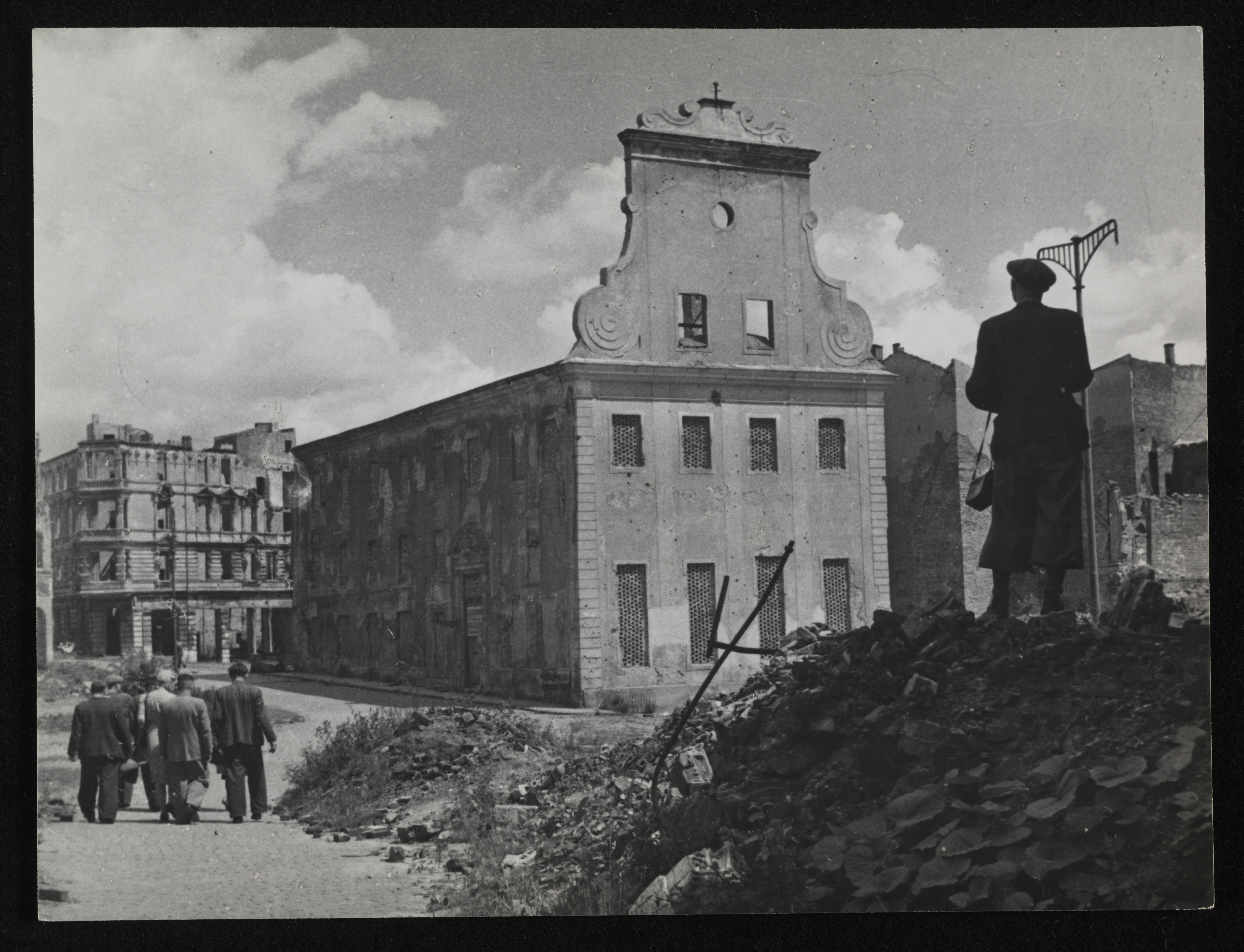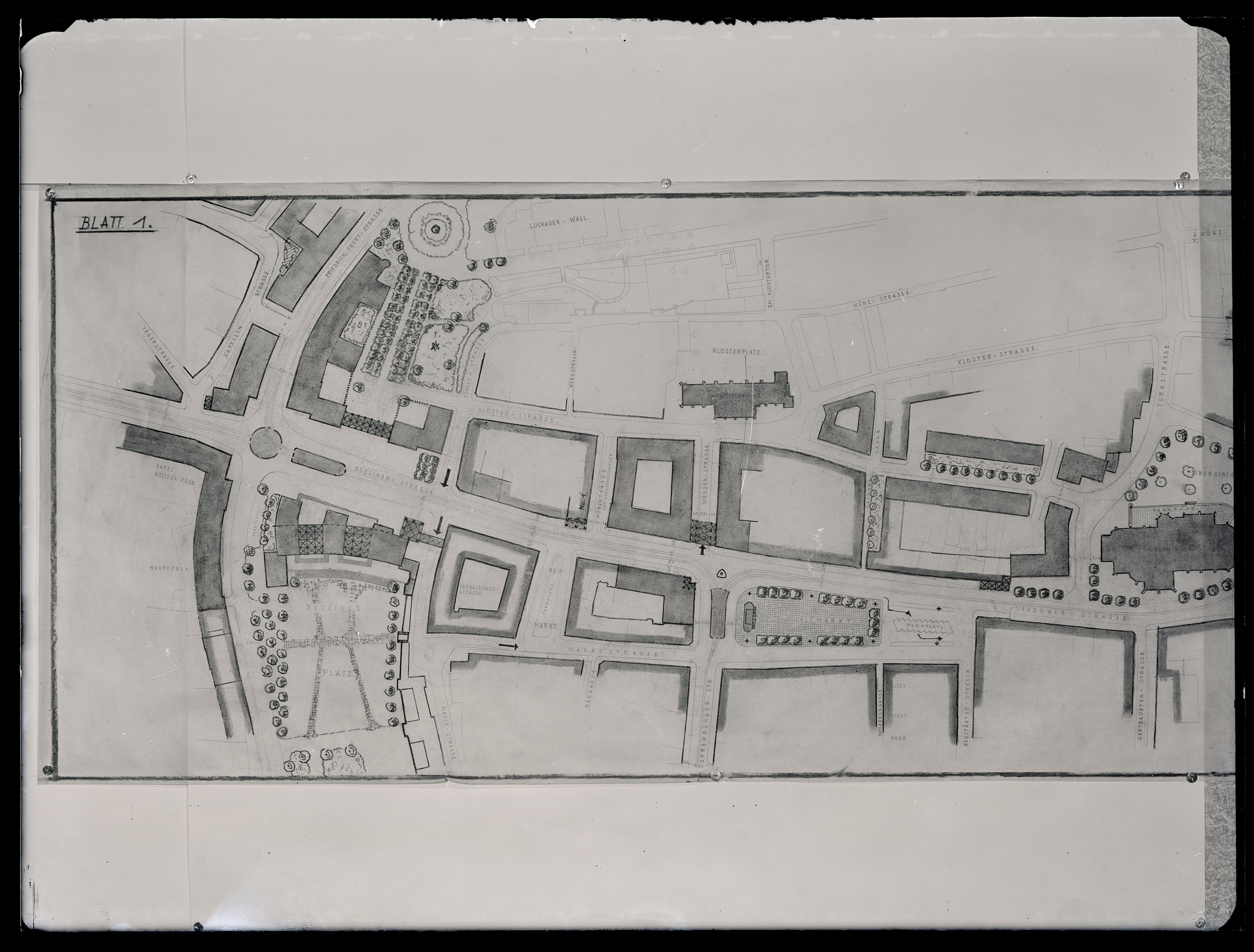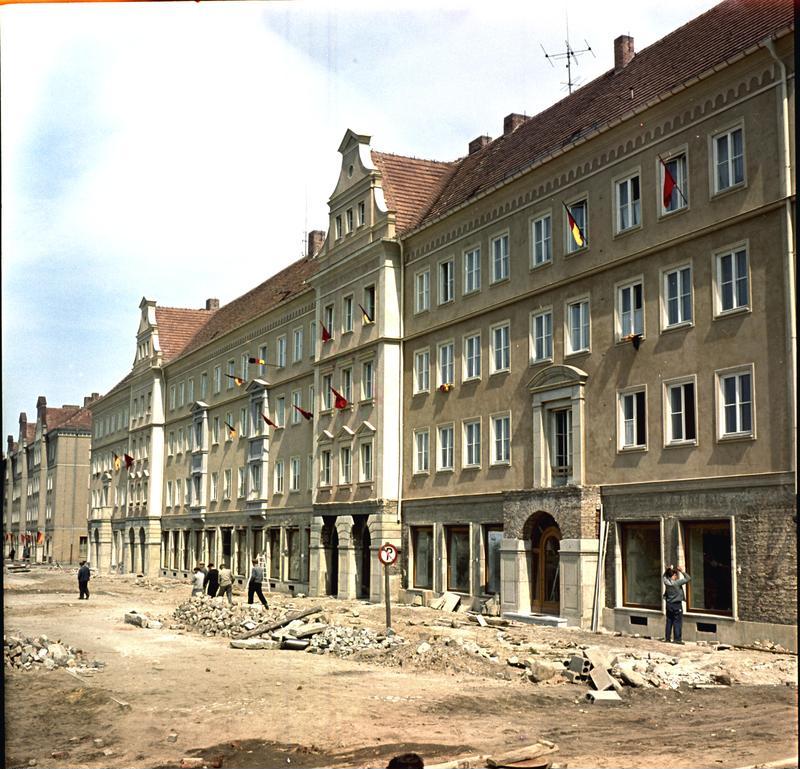
Subproject Planung
Planning examines the transformation of the cities in the aftermath of the Second World War. It questions the role which war damages played in the reconstruction plans and asks whether they were the determining factor when deciding how to remodel the cities. By considering urban renewal proposals made before the war, this research contextualizes the changes made after 1945. It asks whether the post-war plans were realization of the previous project, made under different ideological and political regime. Finally, the project analyzes the similarities and differences in dealing with post-war cities by two communist regimes of Germany and Poland.

The time period until 1960s allows not only better understanding of the dynamics of introduction of Stalinist urbanism to the two satellite states, but also its demise and the advent of the socialist modernism. At the same time the late 1950s marked the official end of the post-war period in Poland: In 1955 the Polish government decreed removal of the last remnants of the war in cities. The East Germany had not such fixed date, but also here the removal of the rubble was coming to an end by the end of this decade. The completion of the new cities was still in the future. However, the end of the 1950s witnessed the first large panel building in German and Polish cities. And although the period since 1945 did not saw the completion of the reconstruction works, the debates on the topic and the numerous projects shed light on the changing approach to the transformation of the cities. Finally, the time frame allows to better understand the changing attitudes towards “reactionary” and “bourgeois” architecture in socialist cityscapes and “German” built monuments in cities acquired by Poland after the war.
The cities examined in this project are: Chemnitz/Karl-Marx-Stadt, Cottbus, Neubrandenburg, Sondershausen in Germany and Gorzów Wlk./Landsberg Warthe, Lubań/Lauban, Racibórz/Ratibor, Szczecin/Stettin in Poland. Until 1945 all of them were within the German borders, thus providing common ground for comparison. Their different size, degree of war damages as well as social and economic base allow better understanding of different factors which impacted the reconstruction. The fact that each was located in a different region, provide insights into regional differences in communist Germany and Poland.

Planning challenges the common understanding of the end of the war. 1945 is often described as a watershed moment, which however was characterized by many continuities, especially within urban planning. This comparative research examines the similarities and differences in urban development across national borders and political regimes and thus contributes to the intertwined European history of post-war reconstruction and related knowledge transfer.